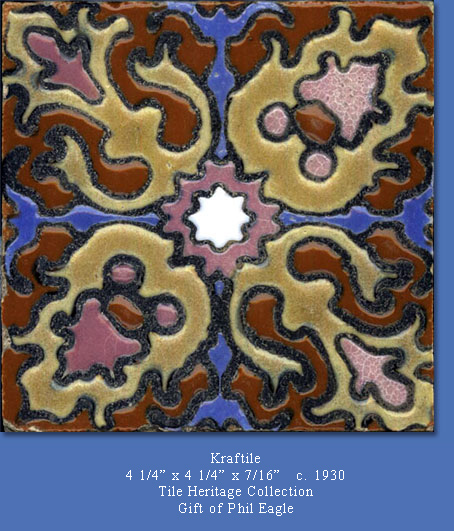|
Quoting from the company’s 1931 product catalog, “In Kraftile it is our
privilege to offer a faience tile of rarely beautiful colorings and
texture - - - outstandingly economical - - - and with greater
durability than any tile yet produced” — a boastful exaggeration but
not unlike those made by many of the company’s competitors.
It is correct to assume a connection between Kraftiles and Kraft Foods,
which are found on grocery shelves throughout the world. The original
Kraft company, founded by four Kraft brothers in Chicago, produced
cheese beginning just after the turn of the last century. The cheese
was shipped in wooden boxes that were made by a company-owned business
in Niles, nestled in the hills on the east side of San Francisco Bay
where wood was cheap. By the mid-1920s, as the story goes, the owners
recognized an opportunity to dispose of its by-products, using the
excess wood to fire kilns, and thus supplying roof tiles for the
ever-increasing number of new houses in the area. The clay was
plentiful, the market was a given, and the talent in the person of A.
Clay Myers was available to superintend the operation. And with Myers
having come from California Art Tile in nearby Richmond, it is
understandable that the roof tile company would expand its product line
to include decorative tiles.
The technique used to produce the art tiles was an ancient one, cuerda
seca, where a resist line is applied to the tile’s surface to keep the
glaze colors separate from one another. The company also produced
cuenca (raised-line) tiles. All the tiles were molded from plastic
(wet) clay, dried, decorated by hand and then single-fired at a
“tremendously” high temperature. “High Fired” was the company’s catch
phrase; the method of manufacture was referred to as “monolithic,”
which was responsible for Kraftile’s enduring qualities.
To view past Tiles of the Month, click here!
|
